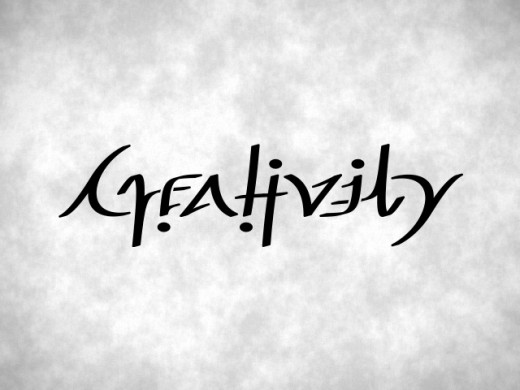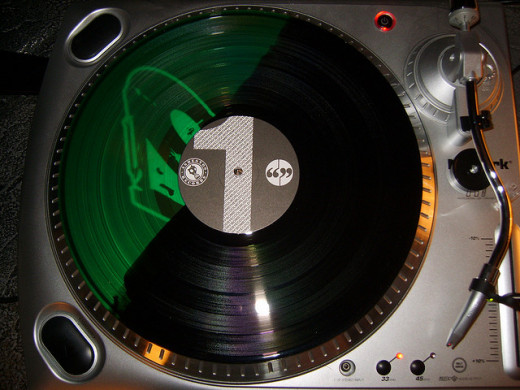Dumbing It Down: How the Music Industry Stifles Creativity
The Industry Motive:
Ambitious musicians entering into the commercial music arena are often inspired by the potential for great financial gains if they can draw and sustain enough audience interest in their work to be “picked up” or “discovered” by a major recording company. Composers, arrangers and songwriters aspire to have a major artist of band record their material. Great talent often remains anonymous and never achieves these goals due to the profit-oriented motivation of the producers, publishers, recording companies, talent management agencies and related businesses that comprise the commercial music industry.
Talent is looked upon as a commodity, and the artists must be a “product” that can be easily marketed within the current popular musical trends. The artistic merit of the talent is of considerable less importance than the opportunity for the industry to increase their corporate sales and revenues. New unknown artists will be passed over if they do not perform the kind of music that is known to be successful in the current marketplace, and experimental and unique acts present more of a financial risk to the industry than the promise of great profits.
Even well established performers (such as Stevie Wonder, Bob Dylan, Joni Mitchell and Ray Charles) have had to self-produce or underwrite new projects that “break the mold” of their previous work. Musicians under contract with record companies and/or management agencies may often have strict definitions of the nature, content and delivery of their product during the contract period.
Additionally, the contract might also allow for the controlling party (rarely the artist) to have final approval or refusal over any proposed new material, performance venues, frequency and method of performances, changes of personnel, press and media interviews, sponsorships or endorsements from other businesses, not-for-profit benefit appearances, as well as any another other factors which might influence or alter the public perceptions of the artist(s) and the possible effects on the potential revenues to be gained by the controlling party.
All in all, the industry wants to have a profitable artist that they can expect to stay a marketable commodity at the highest level of earnings for as long a period of time as possible. Spontaneous creativity on the part of the artist is a threat to the stability of the profits from the point of view of the industry, and it is not nurtured or encouraged.

The Industry Method:
Legally binding contracts define the obligations and limit the behaviors of the artist, but there are other methods the industry employs to insure their profits. Media outlets such Public, Cable and Commercial Television and Radio stations, Film and Record Companies all receive special attention by the industry and there are particular methods employed to control the artists’ exposure in these areas.
Even before the media outlets existed, “songpluggers” during the ragtime era (mid 1800’s) targeted popular entertainers in touring minstrel shows (and the 1920’s vaudeville acts) who would accept money to perform songs all over the country. At the time, they would offer money, a new suit, dinner and drinks, or anything that was of value to the performers who could get the music out in front of the general public. As record companies began to evolve, music publishers took over the role of the songpluggers and continued the inducements to try to get their songs or artists recorded. None of this was considered illegal at the time.
Exposure of the artist to a music buying public was the desired end result, and when radio and television became widespread during the late 1940’s, record companies took over the role of the publishers by trying to induce the radio stations to guarantee placing recordings by their musicians on the playlists that were broadcast during the most listened to timeslots. By now, these inducements had acquired their own special name: “Payola”. This name was created by combining the word “Pay” with the word “Victrola”, which was the name given to one of the earliest record players manufactured in the early 1920’s by the Victor Talking Machine Company.
In 1955, the U. S. Congress passed legislation outlawing payola. In 1958, a “Payola Scandal” occurred, fueled by the discoveries that two popular televisions shows "Twenty-One" and "$64,000 Question" were rigged. As a result, in 1959 the House Subcommittee on Legislative Oversight began investigations into the television and radio industry practices. As a result of these hearings, changes by the FCC in the structure of who decides playlists resulted in new tactics by recording companies to circumvent the law concerning payola.
In 2002, New York State Attorney General Elliot Spitzer prosecuted Sony BMG Music Entertainment, Warner Music Group and Universal Music Group for violations of payola restrictions, all of whom settled out of court during the next few years for million of dollars. Since then, even with the threat of large fines and ongoing investigations by the FCC, payola violations can be found in news items as recently as February 2012.
CREATIVE CROWDFUNDING: How The Crowd Can Help Artists Emerge and Thrive
Do we really need music labels?
The Creative Alternative:
With the major players in the music industry using their manipulative tools of contracts, payola and large international corporate mergers and acquisitions to control the industry environment, artists have been turning to other smaller independent companies that have been emerging in the past decade that encourage and support their artists. Some of these artists have followed the example set by Charlie Chaplin, Douglas Fairbanks, Mary Pickford and D.W. Griffith who created their company “United Artists” in 1914 with the idea that artists should maintain control over their projects rather than be subject to the controls and demands of the larger film studios. The Internet has provided the opportunity for artists to reach millions of people with relatively small financial investments.

In addition to the availability of video sites such as YouTube and Vimeo, and audio vendors such as iTunes and CDBaby, musicians can now self produce and promote themselves. Other Internet sites such as ArtistShare provide the artist a platform for a website to solicit funding for specific projects for annual fees that start as low as $500.00. Even nationally prominent musicians who have big industry backing have used that site for funding and promoting adventurous new projects that their doesn’t fit the mold of the major companies.
Media venues such as the Corporation for Public Broadcasting, National Public Radio and the Public Broadcasting System have regular programs that feature local and regional musicians who have not yet achieved national or international prominence.
Smaller independent recording companies have been springing up in small metropolitan areas allover the country, making the expensive relocation to former major metropolitan areas an option rather than a necessity. With the continuing advances in technology, high quality audio and video recordings can be made by the artists themselves or at local studios that also offer state of the art remote recording at reasonable rates. Some of the major industry players are now paying attention to these self-promoting artists by keeping an eye on the Internet sites that host the local and regional performers who are no longer knocking on the major companies doors. In the end, if these trends continue, it offers a more exciting and varied world of music for the audiences and musicians who have been so masterfully manipulated by the “movers and shakers” of the commercial music industry for so many years.

References:
- payola : http://en.wikipedia.org/wiki/Payola_Scandal
- Payola Scandal Rocks 50's Radio : http://www.modestoradiomuseum.org/payola.html








